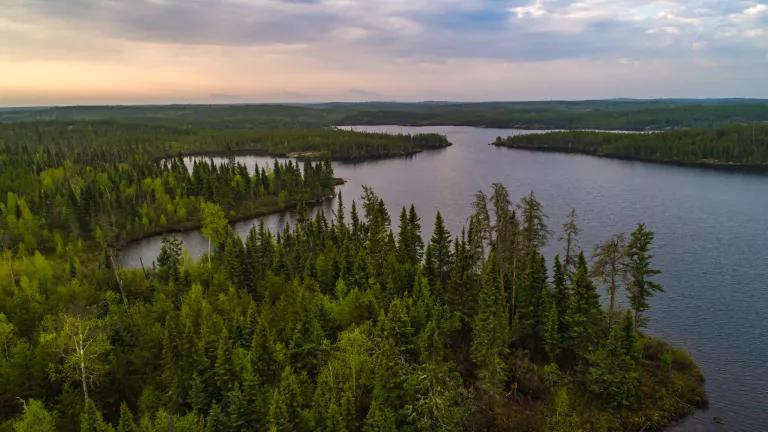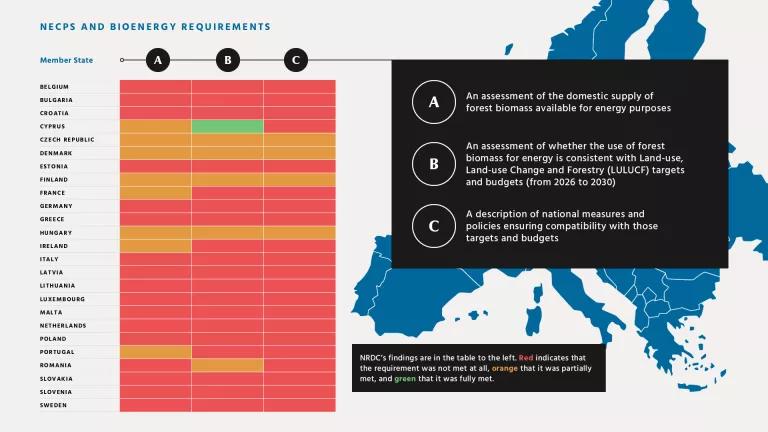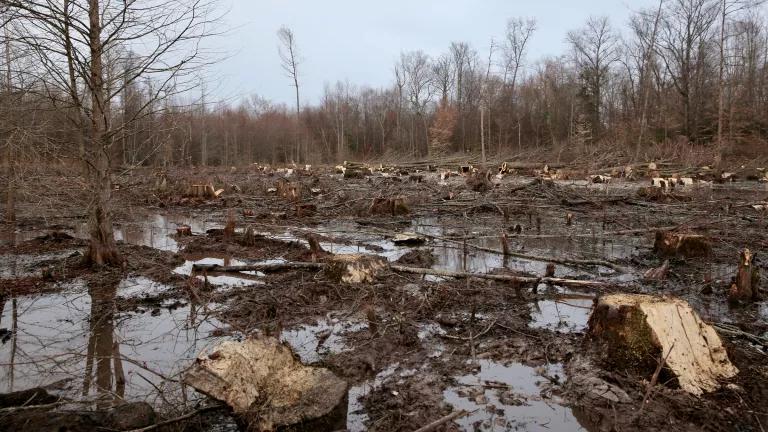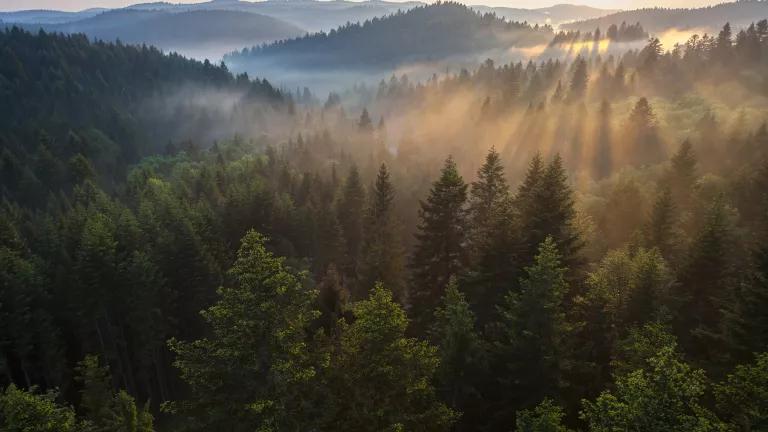IPCC Report Highlights Urgency of Global Forest Protection
Forests, once branded as the world’s “forgotten” climate solutions, are now recognized centerpieces of global climate strategy, and the latest Intergovernmental Panel on Climate Change (IPCC) report underscores just how vital forest protection will be in our climate reality.

Boreal forest in Canada
The IPCC report sounded another urgent climate change alarm, warning that without rapid action, the new reality of droughts, floods, wildfires, and 100-year storms will be just the prologue to a far more dangerous, inhospitable future. Some of these harms are still avoidable if we rein in greenhouse gas emissions, while others are already locked in, meaning we need a comprehensive approach that not only mitigates climate change, but helps preserve and buttress the world’s adaptability to the inescapable disruptions.
Forests are adaptation and mitigation powerhouses whose protection is critical to both avoiding runaway climate change and maintaining resilience in an altered world. They are among the world’s most vital natural climate allies, absorbing and locking up vast amounts of carbon in their trees and soils and buying us critical time to transition to a clean energy future. Forests’ carbon stores can rival those of fossil fuels, particularly in the carbon-dense forests of the Global North. The boreal forest, which crowns the Northern Hemisphere, is the most carbon-dense terrestrial ecosystem in the world. The Canadian boreal forest alone stores twice as much carbon as the world’s oil reserves.
From the lush tropics to the majestic boreal, the protection of these towering ecosystems is essential to staving off the IPCC’s most dire predictions while helping bolster communities' and ecosystems' resilience to growing impacts. In the face of sweeping, worsening climate impacts, we need a truly global forest protection framework.
While forests are no longer forgotten climate solutions, the actual pathways to their protection have been slow to follow—especially in northern forests. For the last 30 years, the international community has largely turned a blind eye to the protection of boreal and temperate forests. Countries in the Global North have attempted to avoid scrutiny through definitional loopholes and flawed carbon accounting systems that deflect attention on the Global South while giving their own devastating logging practices a free pass.
Northern forests, just like the tropics, face severe threats from unsustainable industrial logging and other development. Each year, industrial logging in Canada clearcuts over a million acres of boreal forest, much of this in irreplaceable, uniquely carbon-rich primary forests. The first- and third-highest intact forest loss in the world is happening in Russia and Canada, respectively, while Sweden has lost over 70% of its lichen-rich forests to the logging industry and ranks first globally in tree loss per capita, right ahead of Norway, Canada, and Russia. The impacts of this liquidation of primary and older forests and their conversion to lower-carbon clearcuts and secondary forests are catastrophic.

Clearcut logging in Ontario
River Jordan for NRDC
This forest loss doesn’t just release vast amounts of carbon into the atmosphere—it also impacts how forests respond to a changing climate. As the IPCC report highlighted, both communities and ecosystems are going to face increasingly severe climate consequences. For forests, one of the biggest stressors will be wildfires, which, in many areas, have already become more frequent and severe in the warming world.
Yet forests aren’t helpless in the face of wildfires. In fact, for many forests like the boreal, fire is a natural and important part of maintaining a healthy ecosystem. While government and industry have pointed to more frequent and extreme wildfires as reasons to speed up industrial logging, as a way of salvaging wood before it goes up in smoke, forests are more resilient when they are left as older, complex ecosystems. It’s the secondary, less biodiverse regions that burn more often and with greater fervor. Industrial logging, which targets the oldest, most resilient, and carbon-dense forest regions, is a climate catastrophe–not an adaptation strategy.
The global industry stranglehold on forests is also inimical to the most effective natural climate mitigation and adaptation policy there is: allowing Indigenous communities to lead. Industrial logging, both in the Global North and in the tropics, all too often occurs in violation of Indigenous Peoples' internationally recognized right to dictate the future of their traditional territories. Where Indigenous rights to their lands and self-determination are strong, both the climate and biodiversity are better protected. When it comes to climate action, guaranteeing Indigenous Peoples' right to free, prior and informed consent is integral to achieving a just and equitable future.
Without a truly global system of forest protection, even international mechanisms focused on the protection of tropical forests have failed. It’s difficult for countries in the Global North to spur change abroad when their own credibility is so compromised. With the 2021 Glasgow Leaders’ Declaration on Forests and Land Use, signed by over 140 countries, there’s a new opportunity to fix the mistakes of the past. But the success of this new commitment depends on a unified approach that holds countries globally to account for the protection of their climate-critical forests.
As the IPCC report highlights, climate change will impact every part of the world. Policies around forest protection need to be equally international, addressing the loss of irreplaceable forests not just in the tropics, but also in the Global North. Forests are a two-for-one solution, providing both the mitigation and adaptation that can help the world chart a sustainable and livable path forward. However, their own future depends on concerted global action that looks not just to impacts abroad, but also in our own backyards.



